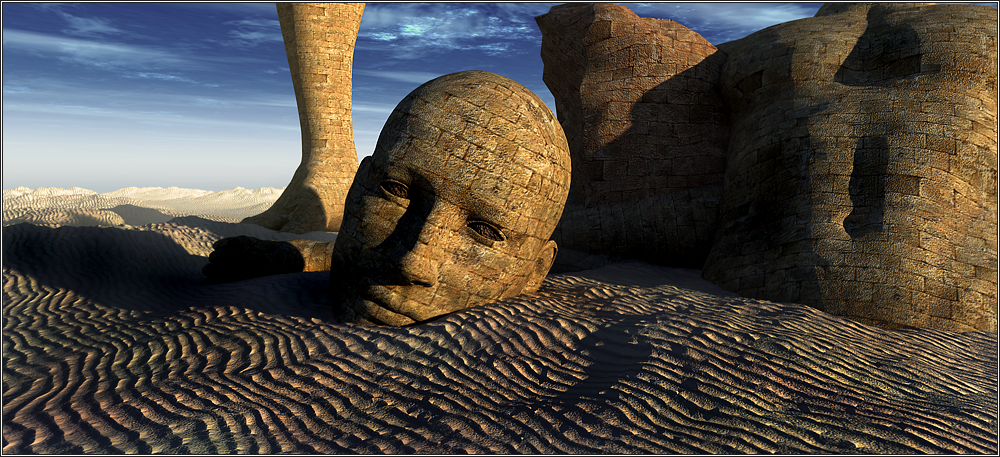
Shelley’s disdain for this imperial growth is well-documented. In the power vacuum that followed, the British Empire continued to swell unchecked. France was reduced down to her original borders, which have remained effectively unchanged. By the summer of 1815, the Congress of Vienna was negotiated and signed. France began her Russian campaign that year, and suffered an abysmal defeat. Only the Russian and Ottoman empires could contain the superpower. By 1812, France controlled - to varying degrees - almost all of Europe her territory spanned from Denmark to Italy, from Spain to Austria.
#Who was ozymandias series
The Napoleonic Wars erupted in 1803, and a series of major conflicts tore through the continent as France fought a fluctuating array of European powers, primarily led and financed by the United Kingdom. In 1798 - just twenty years earlier - Napoleon conquered Egypt, and treasures like The Younger Memnon entered the European imagination. While one piece of one statue served as the immediate inspiration for the two sonnets, the poems might be read within a larger historical context.

Round the decay Of that colossal wreck, boundless and bare The lone and level sands stretch far away. Near them, on the sand, Half sunk, a shattered visage lies, whose frown, And wrinkled lip, and sneer of cold command, Tell that its sculptor well those passions read Which yet survive, stamped on these lifeless things, The hand that mocked them and the heart that fed:Īnd on the pedestal these words appear: ‘My name is Ozymandias, king of kings: Look on my works, ye Mighty, and despair!’ Nothing beside remains. I met a traveller from an antique land Who said: Two vast and trunkless legs of stone Stand in the desert. Shelley’s was published on Januunder the pen name Glirastes, and Smith’s was published on Februwith the initials H.S. Shelley’s now-famous poem has eclipsed the entry of his friend Horace Smith (1779–1849), who wrote his sonnet on the same topic and with the same title. The poem is regarded as one of Shelley’s most famous works and is frequently anthologized. “Ozymandias” is a sonnet written by Romantic poet Percy Bysshe Shelley (1792–1822). Inspired by the announcement, two English poets wrote poems in friendly competition and submitted them to The Examiner in London. A seven-ton fragment - comprised of the head and torso - had been removed in 1816 by the Italian adventurer Giovanni Battista Belzoni (1728–1823). It was once part of a massive, full-body statue at the Ramesseum, the mortuary temple to Ramesses at Thebes. In 1817, the British Museum announced its latest acquisition: a large bust of Ramesses II from the thirteenth century BCE. 1279–1213 BCE) who ruled in the 19th Dynasty of Ancient Egypt.

In antiquity, Ozymandias was the Greek name for the Egyptian pharaoh Ramesses II (r. The statue seems to be saying to any ‘Mighty’ rival emperor who might be tempted to try and invade Rameses’ kingdom: look around you at everything I, Rameses II, have built, and despair of ever vanquishing me or the empire I have made! The grandeur of his kingdom will never be matched, and they should despair of ever trying to equal it.The Younger Memnon - a seven-ton fragment from a statue of Ramesses II - recovered at Thebes by Giovanni Battista Belzoni in 1816 and acquired by the British Museum in 1817. The declaration ‘Look on my works, ye Mighty, and despair!’ is supposed to be triumphant, and originally was: when the statue was first built, people gazing at it were meant to look at the empire built by Rameses and be cowed into submission by its vastness and power. Who was Ozymandias? Ozymandias was the Greek name for Rameses II, an Egyptian ruler whose empire crumbled to dust long ago. They are inscribed rather than spoken, but in a sense, the words ‘My name is Ozymandias, king of kings: / Look on my works, ye Mighty, and despair!’ give us a third speaker within this short poem. The inscription ‘Look on my works, ye Mighty, and despair!’ is ironic, for reasons which are worth analysing.


 0 kommentar(er)
0 kommentar(er)
